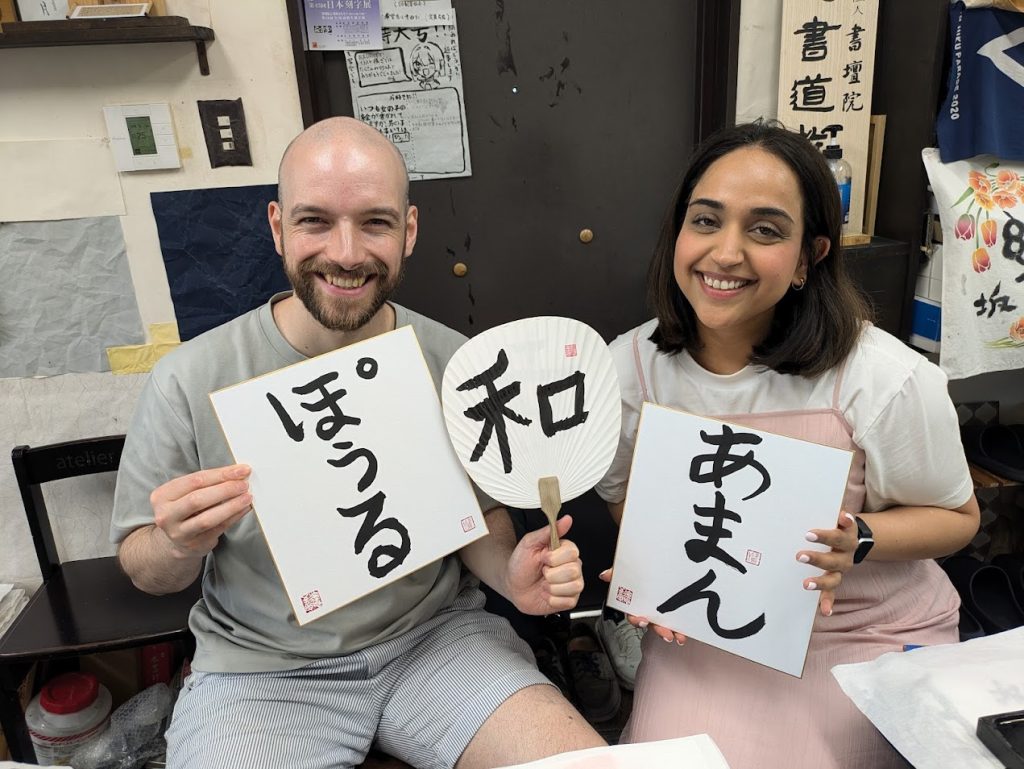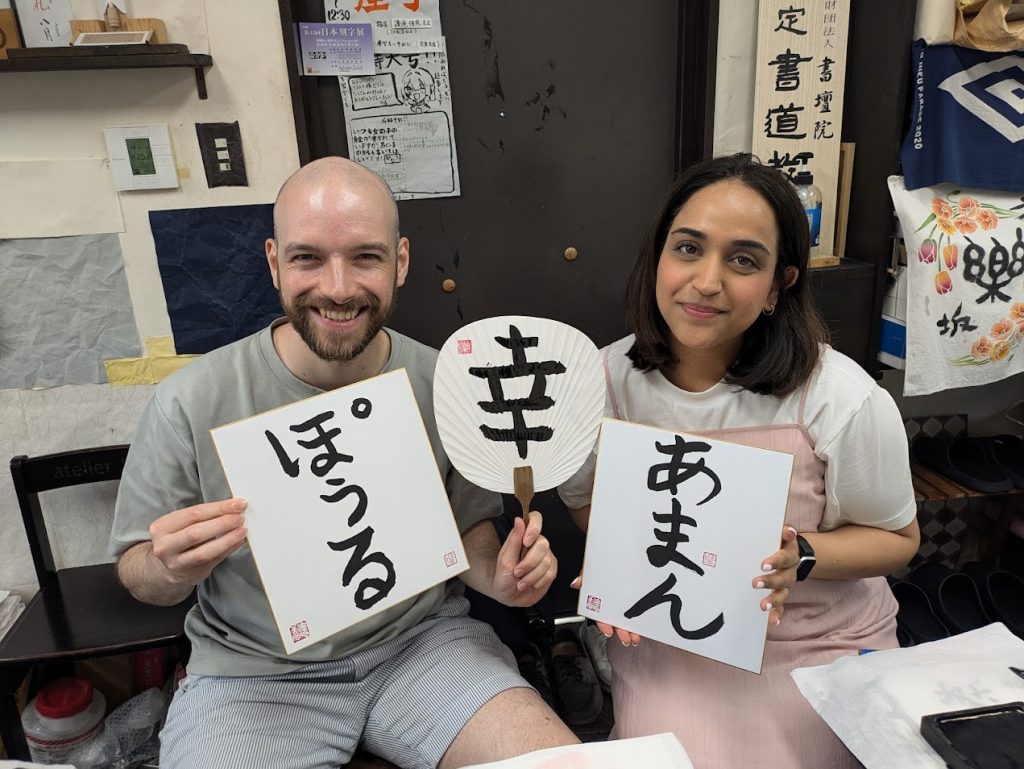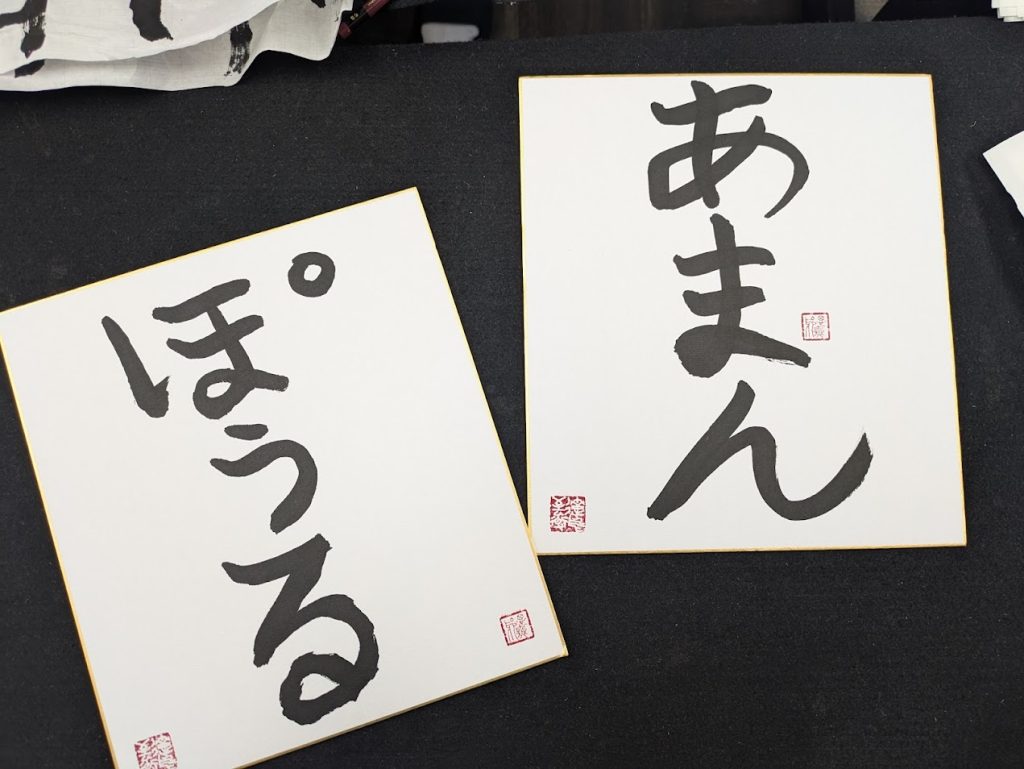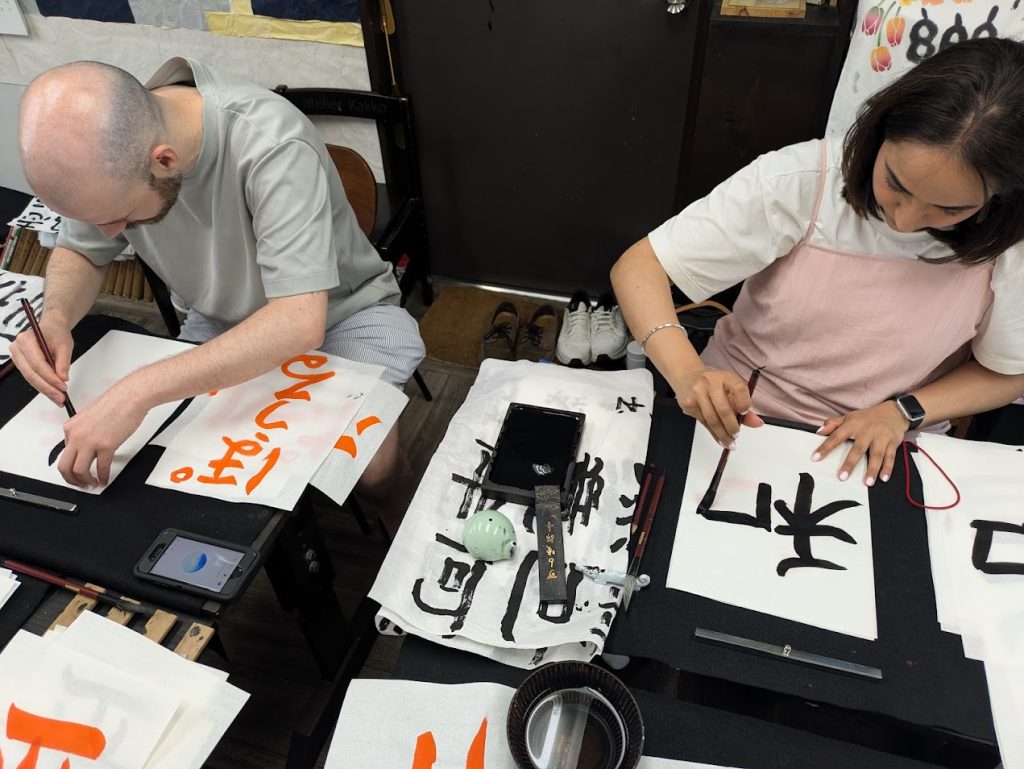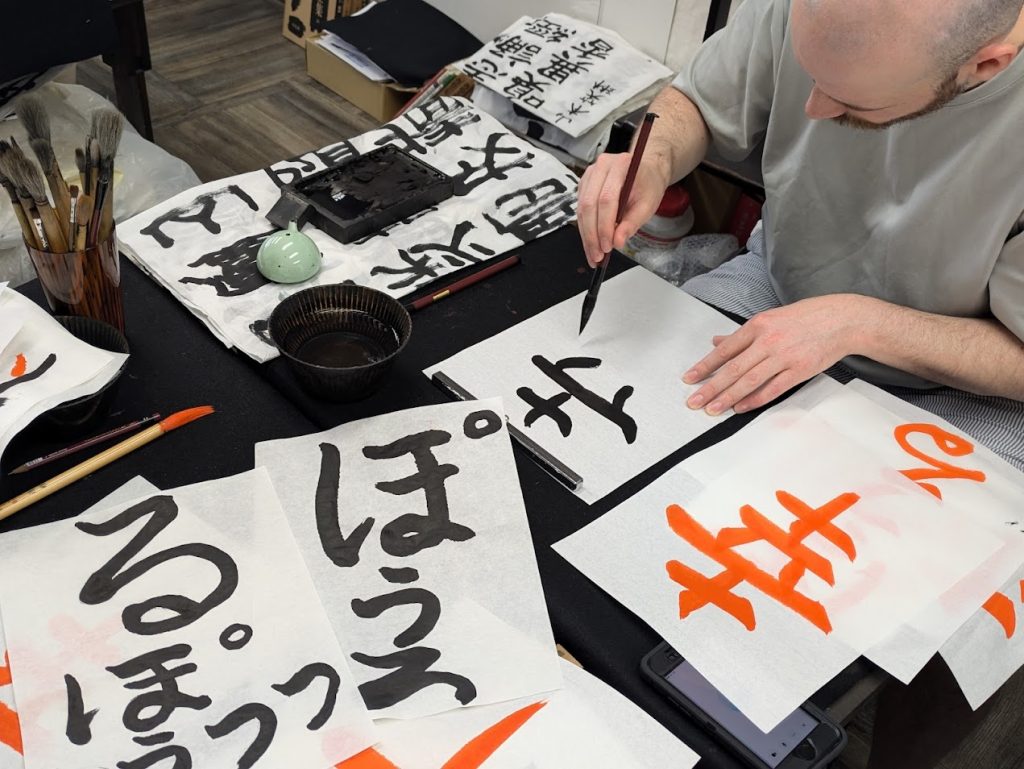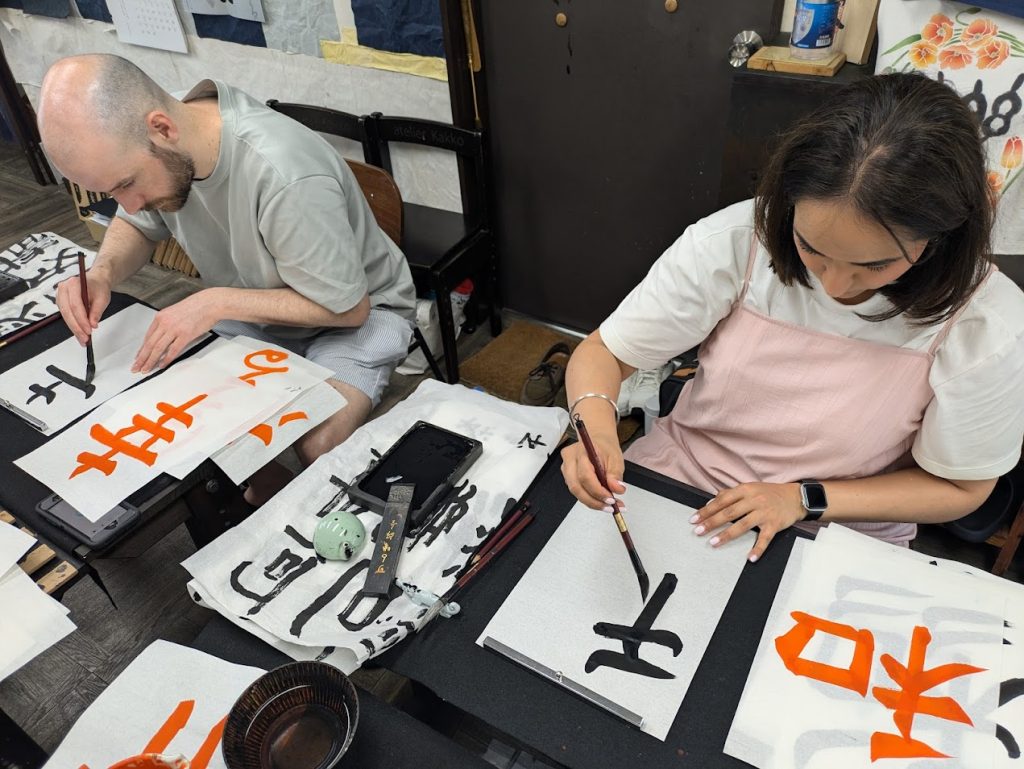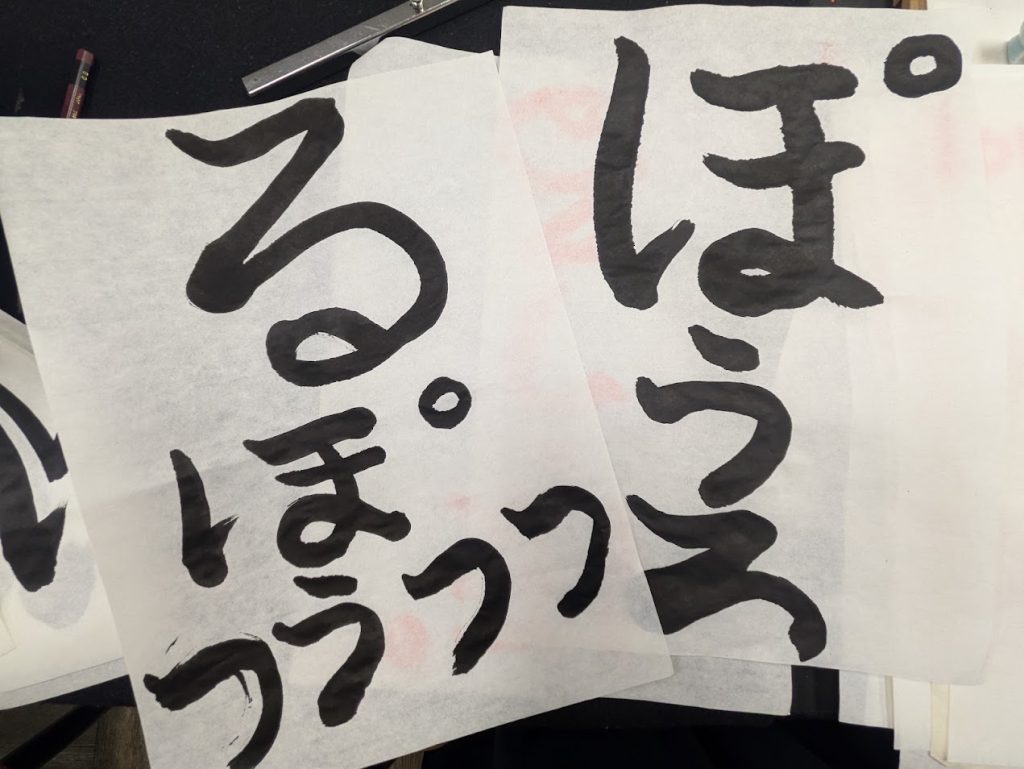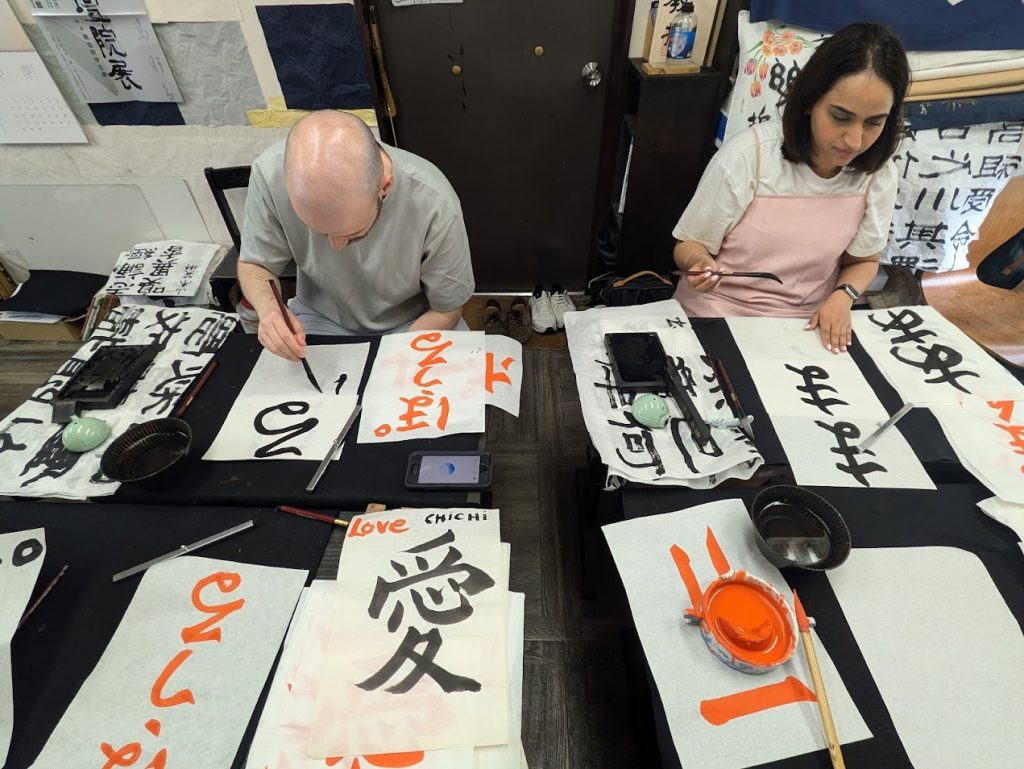In September, we welcomed one group of tourists for a calligraphy experience.
Paul and Aman from the UK joined us!
They had just arrived in Tokyo after coming through Osaka, and scheduled their calligraphy experience right away.
Even though I’m not very confident in English, they kindly said, “We have a translation app, so please speak in Japanese,” and placed their smartphone on the table. That’s how our lesson began.
Both of them had such wonderful smiles, and although they kept saying “It’s difficult!”, they practiced each character with great enthusiasm. Since they booked a 90-minute session, there was plenty of time to practice.
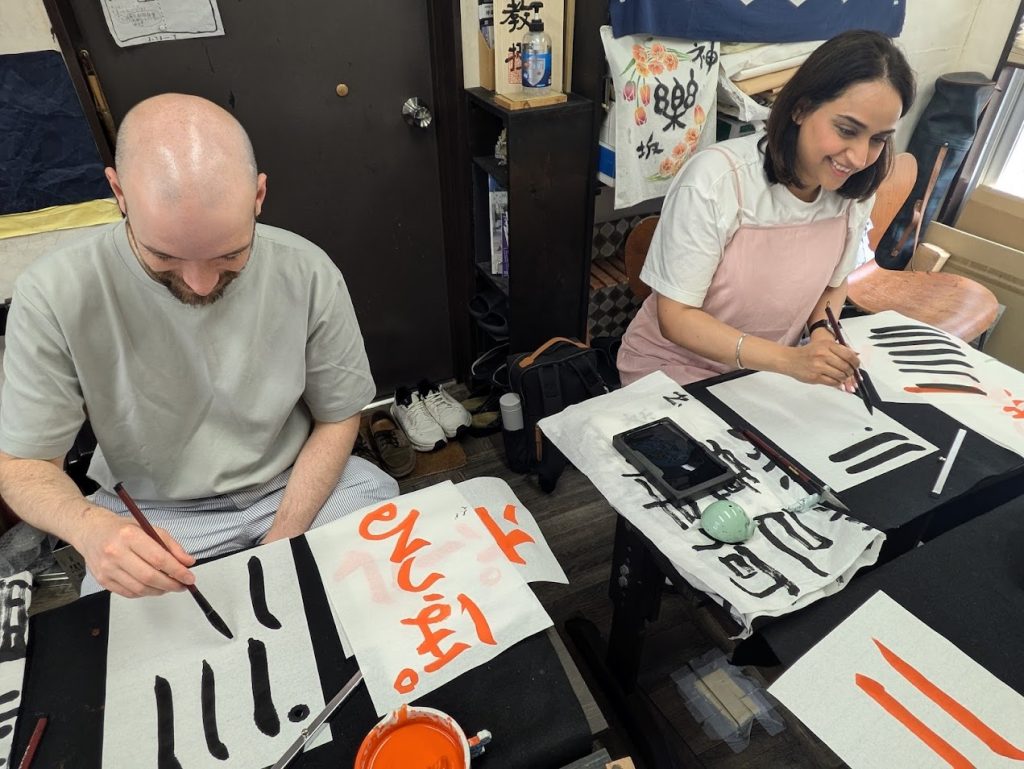
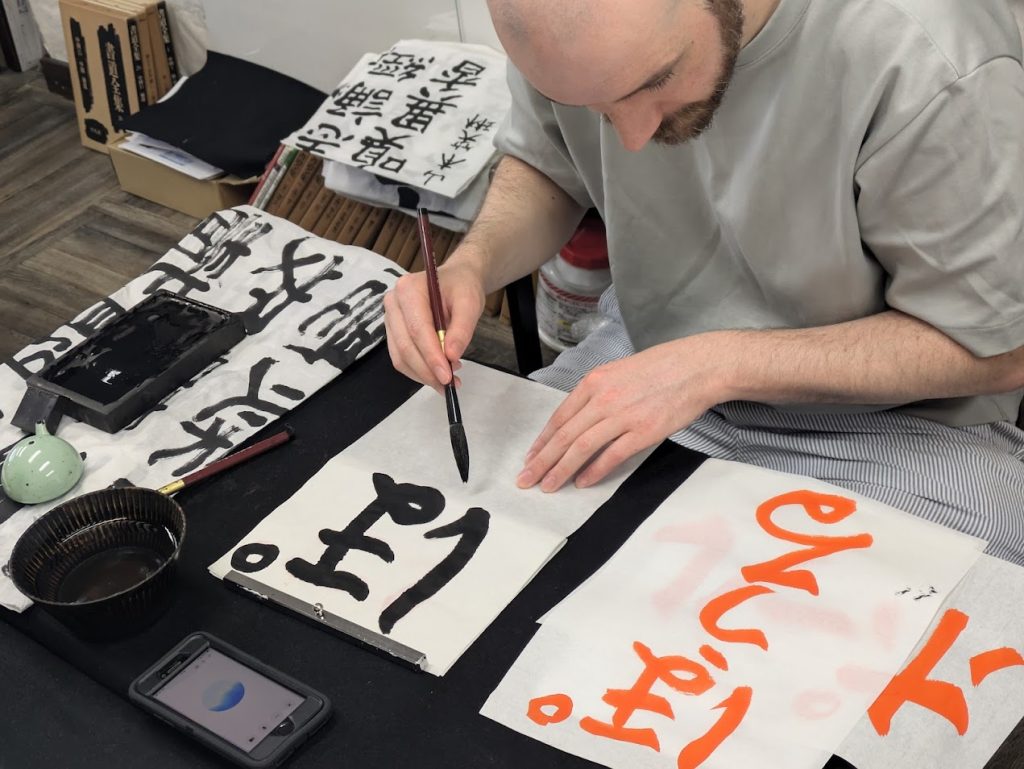
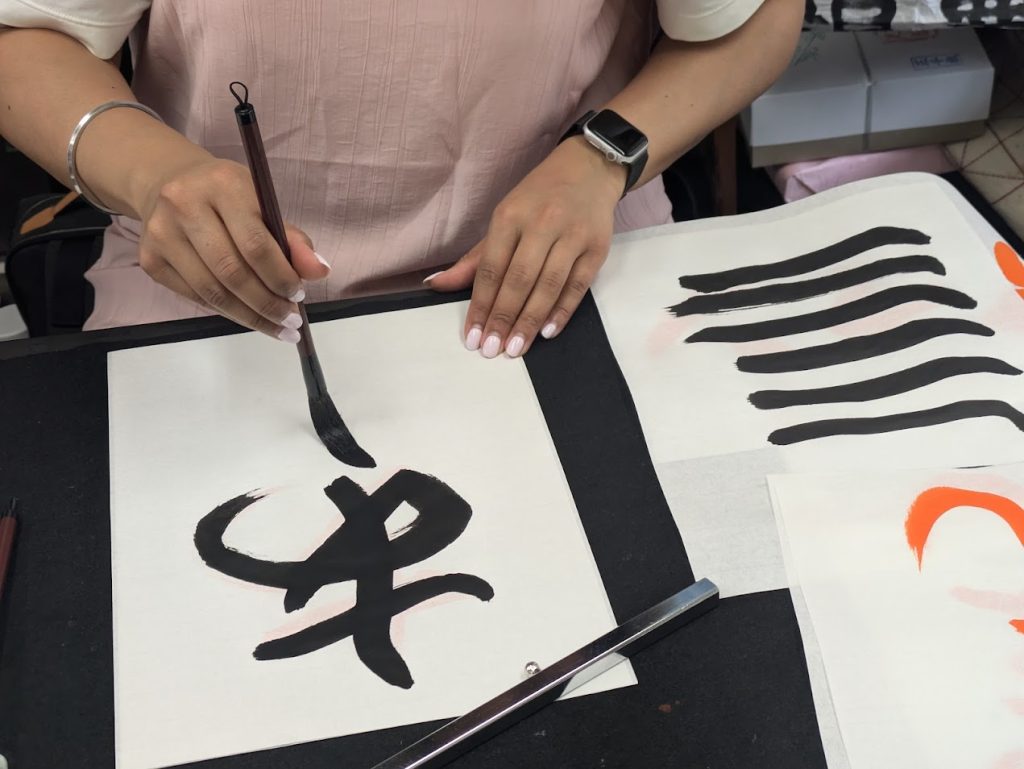
What surprised me the most was the translation app!
It interpreted even casual muttering in such natural Japanese that I was truly amazed. Thanks to that, even their little asides and conversations with each other were translated, which often made us burst into laughter together. It made the lesson really fun!
Of course, practice itself was very serious. Aman asked some very insightful questions, which were sometimes difficult to answer—not because of the language barrier, but because I had to think carefully about how to explain them. While the app was fantastic for ordinary conversation, it sometimes struggled with subtle expressions, reminding me that we can’t rely on AI for everything.
Besides their names, they also chose single kanji characters they wanted to try writing. In the end, they wrote their names on shikishi (decorative boards), and their chosen kanji on uchiwa (Japanese fans).
When aiming for perfection, it’s easy to think “I failed!” whenever the brush doesn’t move exactly as imagined. But I encouraged them to see ink splashes and brush textures as part of the unique expression of that moment. Every piece becomes a one-of-a-kind work of art.
Together, Paul and Aman created beautiful, original calligraphy pieces, and it was such a joy to share this experience with them. ✨
